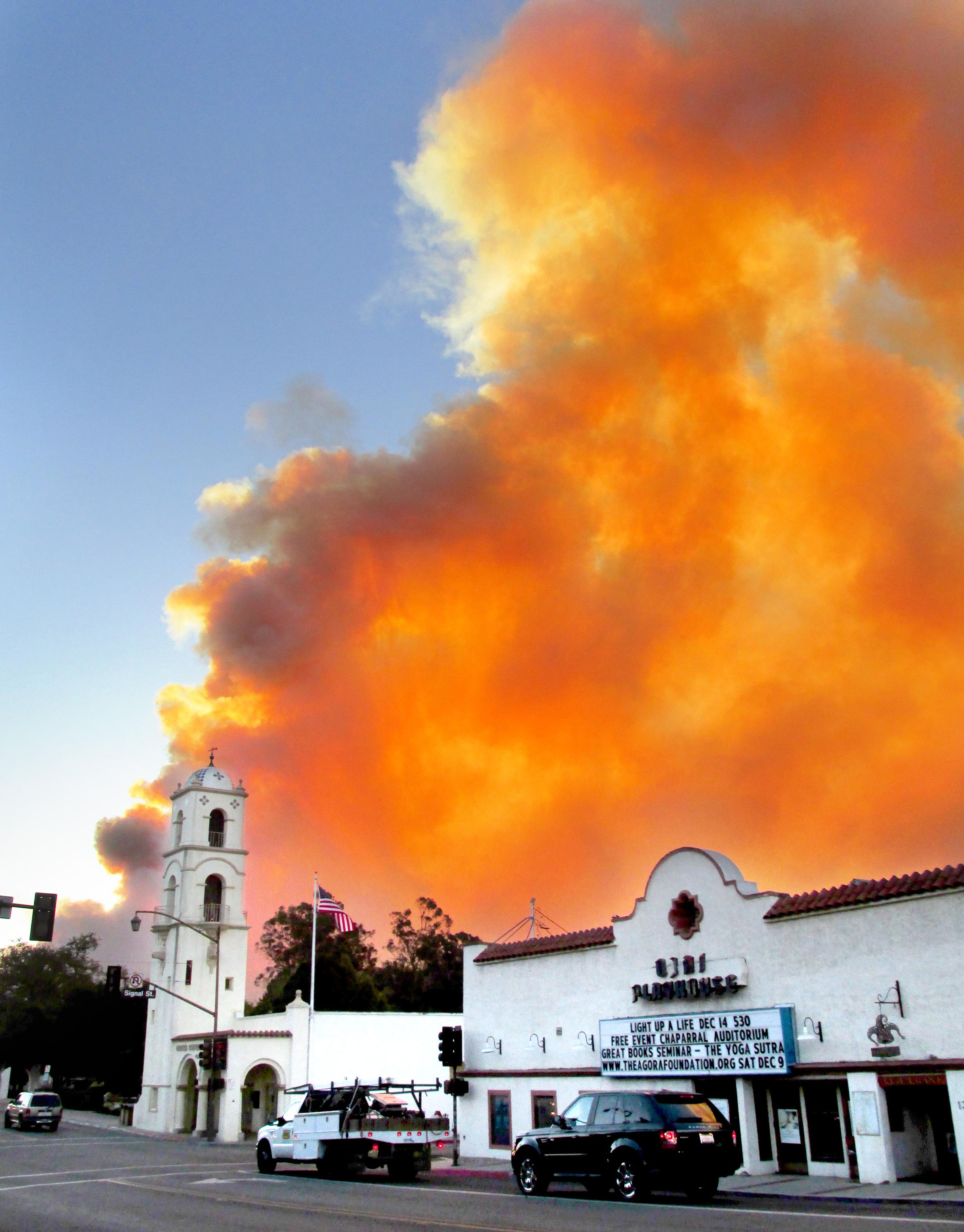




Use this resource guide to prepare yourself, your family and your property, in partnership with your neighbors, for the next fire.
Tools: Home-hardening, go bag, evacuation, contacts, information.
It is one thing to read about preparing for fire — packing go bags, evacuating, home-hardening and all the rest. And quite another to actually do it.
You are not alone.
Ojai Valley News reporters preparing this guide all experienced the 2017 Thomas Fire, as most of our readers did. We thought we were well enough prepared then. We weren’t.
We think we are as well prepared as we need to be now. We aren’t.
It’s not for lack of information.
In creating this Ojai Valley Fire Resource Guide, we are struck by just how many nonprofit organizations and government agencies have extensive, easy-to-access information guides online to show us the most effective ways to prepare.
We have listed some here. We recommend you keep this publication and cut out some of the resources listed inside.
Our local first responders all recommend we register for the free vcalert.org, operated by the Ventura County Office of Emergency Services, which will send out an alert when there are nearby fires or other disasters.
To register or update your information online, go to vcalert.org, or call 805-6489283, or email vc.alert@ventura.org
The other very helpful app so many residents have already downloaded onto their smart phones is Watch Duty (watchduty.org), a nonprofit that alerts people of nearby wildfires and firefighting in real time.
We recommend you stop reading right here for a minute to sign up for these two free notification services.
We hear all too often that it is not if the next fire will happen, but when. What we have learned firsthand from the Thomas Fire is that, while we rely on our brave first responders in emergencies, the very first first responders are each of us.
“Prepare Now” was just a headline for us creating this special section. Not anymore. We hope you join us in getting prepared. Please email teams@ojaivalleynews.com to let us know what you are doing to get ready so we can share your tips with our readers and inspire each other to also be ready for ourselves, our neighbors and our community. Be ready and be safe.
Thank you.
The Ojai Valley News team

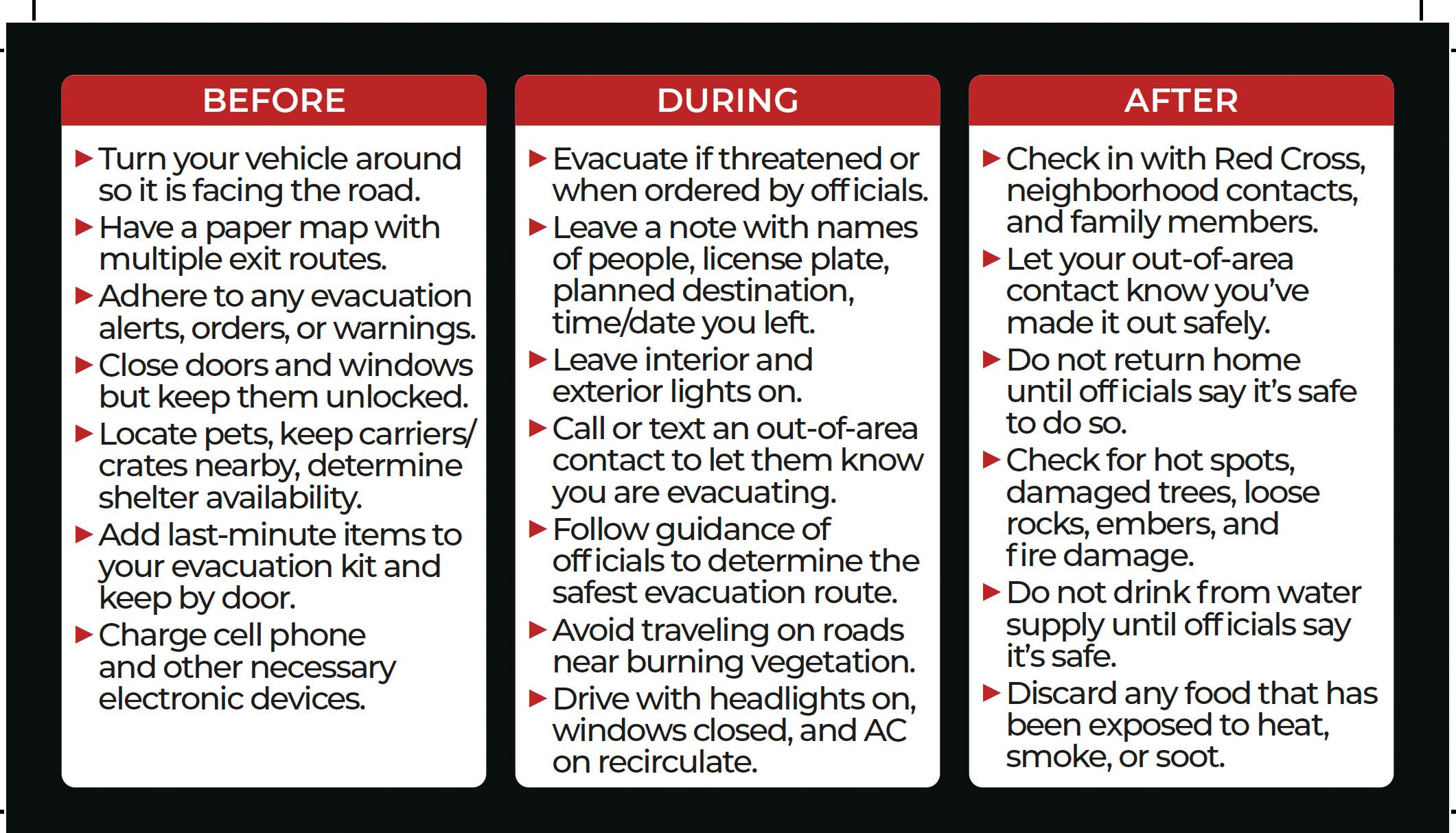
During an emergency such as a fire, you can be a hero to your loved ones in just a few simple steps. Utilities and basic services could be interrupted for a while. Build an emergency kit to sustain your family for at least three days. Here’s what you’ll need, according to the Ventura County Sheriff’s Office of Emergency Services: THE BASIC ESSENTIALS
• Water, 1 gallon of water per person per day for at least three days, for drinking and sanitation
• Food, at least a three-day supply of nonperishable food
• Battery-powered or hand-crank radio and a NOAA Weather Radio with tone alert and extra batteries for both
• Flashlight and extra batteries, or a hand-crank flashlight
• First aid kit
• Whistle to signal for help
• Respirator to help filter contaminated air and plastic sheeting and duct tape to shelter in place.
• Moist towelettes, garbage bags and plastic ties for personal sanitation
• Wrench or pliers to turn off utilities
• Can opener for food (if kit contains canned food)
• Local maps
• Cell phone with chargers, inverter or solar charger RECOMMENDED ITEMS
• Prescription medications, several days supply of over-the-counter drugs, and vitamins
• Nonprescription medications such as pain relievers and others for chronic symptoms
• Mess kits, paper cups, plates, paper towels and plastic utensils
• Soap, hand sanitizer and disinfecting wipes
• Prescription eyeglasses and/or contact lens case and solution
• Cash in small denominations
• Sleeping bag or warm blanket for each person
• Complete change of clothing and shoes appropriate for your climate
• Fire extinguisher
• Matches in waterproof container
• Feminine supplies and personal hygiene items












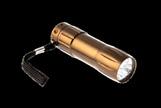



• Important family documents such as copies of insurance policies, identification and bank account records saved electronically or in a waterproof, portable container
• Paper and pencil ACCESS & FUNCTIONAL NEEDS
Consider daily needs and store extra provisions in case supplies become limited.
• Battery backup solutions for medical and communications devices
• Instructions for operating your medical devices for others
• Tire care for certain mobility devices like wheelchairs
• Keep a list of nearby medical facilities/local hospitals and accessible transportation providers CHILDREN
• Infant formulas, bottles, diapers, wipes, hand-operated breast pump and extra clothing
• A blanket, toy or other comfort item
• Books, games, puzzles or other activities for children PETS
• Pet food and extra water for your pet
• Medicines your pet requires
• Photo of you and your pet together
• Sanitation/hygiene items for pets
• Travel carrier/travel bowls
• Toys and/or comfort items
More information on preparing for disasters is online at readyventuracounty.org


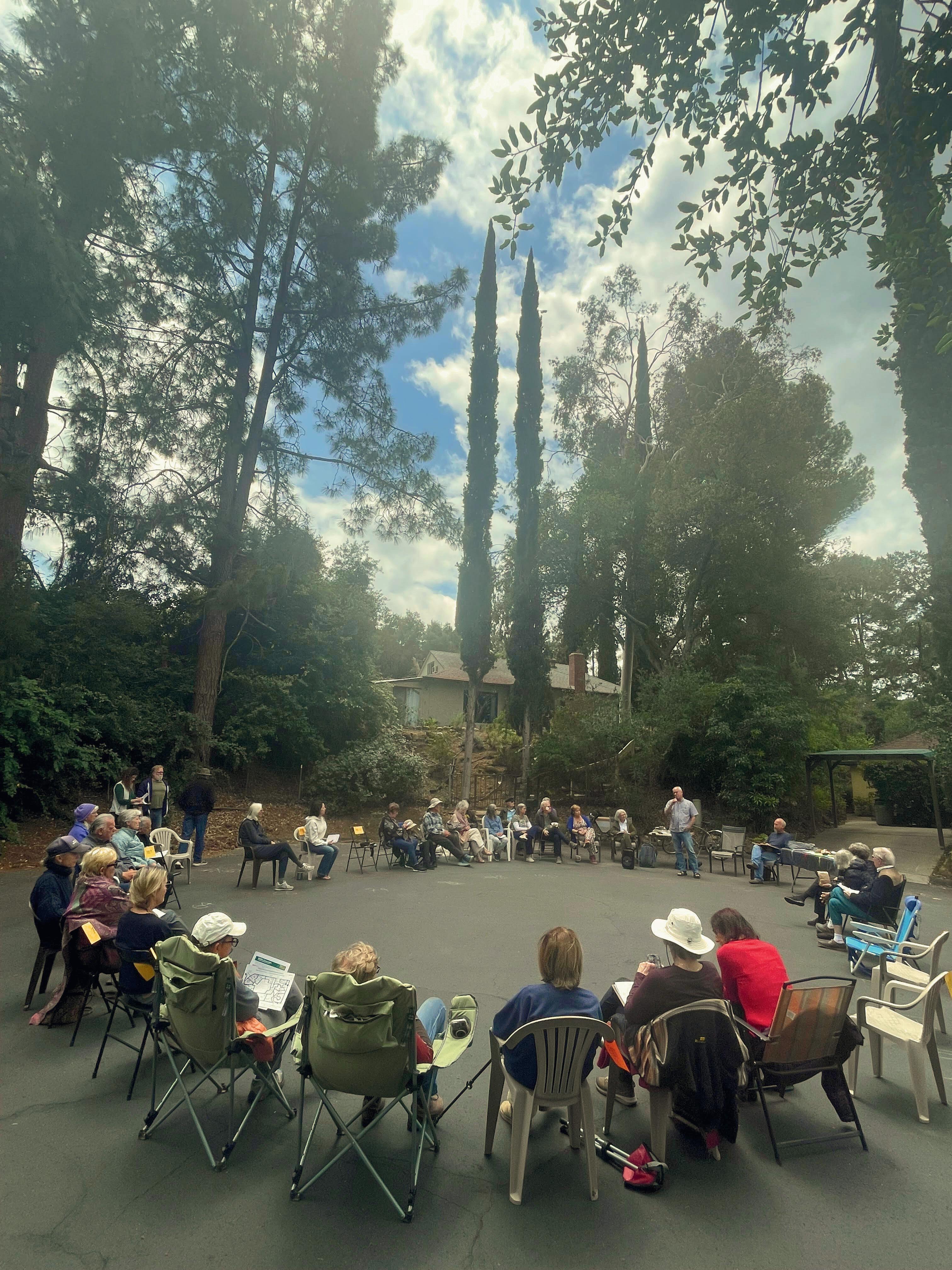

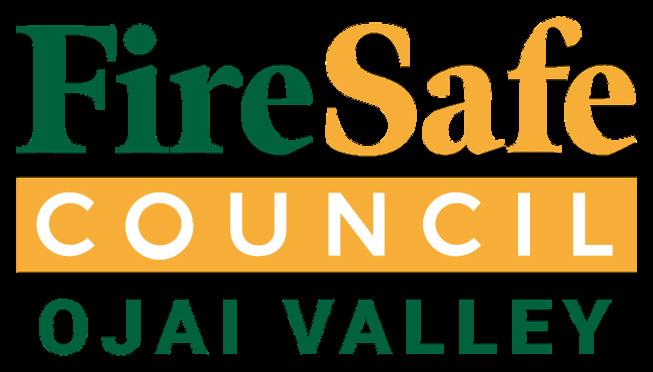
Kimberly Rivers kimberly@ojaivalleynews.com
“Do not wait to be told to evacuate. When you first think there is a risk, prepare and leave. Don’t wait for us,” said Patrick Maynard, director with the Office of Emergency Services (OES), a division of the Ventura County Sheriff’s Office.
OES manages the county’s emergency alert system — vcalert.org, which sends out evacuation alerts.
Maynard said residents can expect to see “a change in approach” of how emergency alerts are released through the VC Alert system. He said alerts will be sent out quicker than before, but they might be more general, with fewer details. After reviewing the alerts over several incidents, OES realized that staff was working to get details about the incident, location and certain specificity to “add credibility” to the alert.
“But that can lead to a delay” as to when alerts are sent out, Maynard said. This can become a heightened safety factor with fast-moving fires.
Now, initial alerts will be more “generic” and the county will not wait for all details before alerting the public about an emergency situation.
“Details will come later,” said Maynard. Residents can expect alerts to include phrases like “your neighborhood” rather than specific descriptions of where a fire is located.
Maynard said with fires that can move “fast and furious,” residents need to “be responsible for their own safety.”
By law, all listed and unlisted landphone line numbers are provided to OES for the alert system, said Maynard. Those are in addition to the numbers that come in through the opt-in VC Alert website. In addition, Maynard said the county purchases numbers through a third-party provider.
“The bulk of phone numbers in the VC Alert system comes from this,” said Maynard. The county also has access to three databases that contain contact information gathered from available records. The system will “de-duplicate” the contact information so residents do not receive multiple alerts.
Residents are encouraged to register with VC Alert at vcalert.org even if they have received alerts in the past without registering. Multiple addresses can be entered so that locations of homes, work and schools can be included and alerts will be specific for those locations.
If you and your neighbors are truly serious about being prepared for a fire disaster, you need to check out the Firewise USA program, led by the National Fire Protection Association and reviewed by Cal Fire.
To learn about it and take action to participate, visit: venturafiresafe.org/firewiseusa/ Already leading the way are five Ojai Valley communities preparing their neighborhoods for fire with the Firewise program. They are:
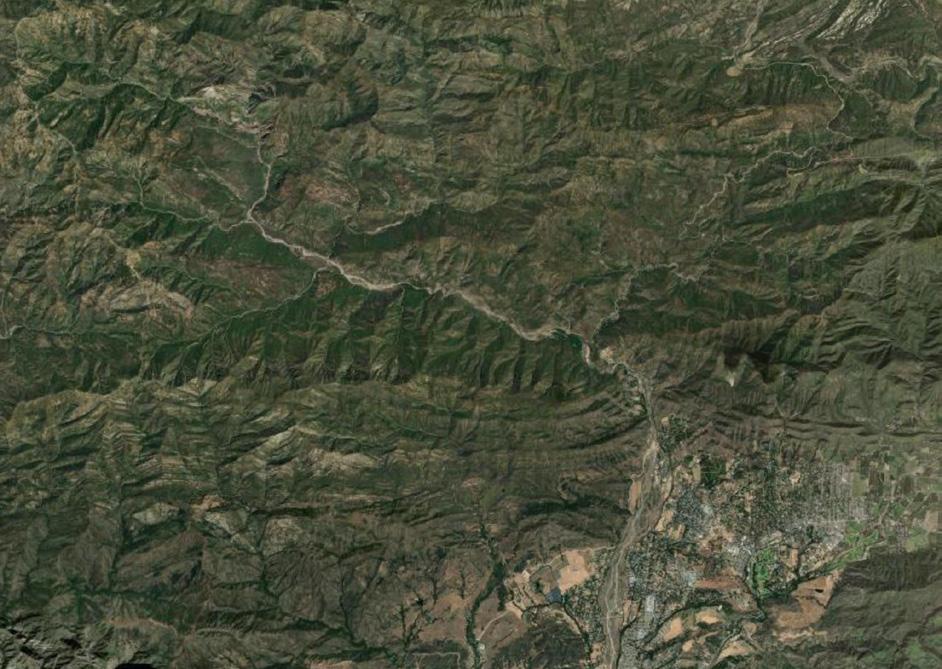
• Golden Oaks Mobile Home Park: tinyurl.com/mr4434yz
• Rancho Matilija: tinyurl.com/5n99e55d
• Persimmon Hill: tinyurl.com/2b2z7sus
• Saddle Mountain — Oak Ridge Estates: tinyurl.com/5kvhm48f
• Matilija Canyon: tinyurl.com/juen7csv
The Firewise program includes six basic steps to get started:
1. Form a team.
2. Assess wildfire risk.

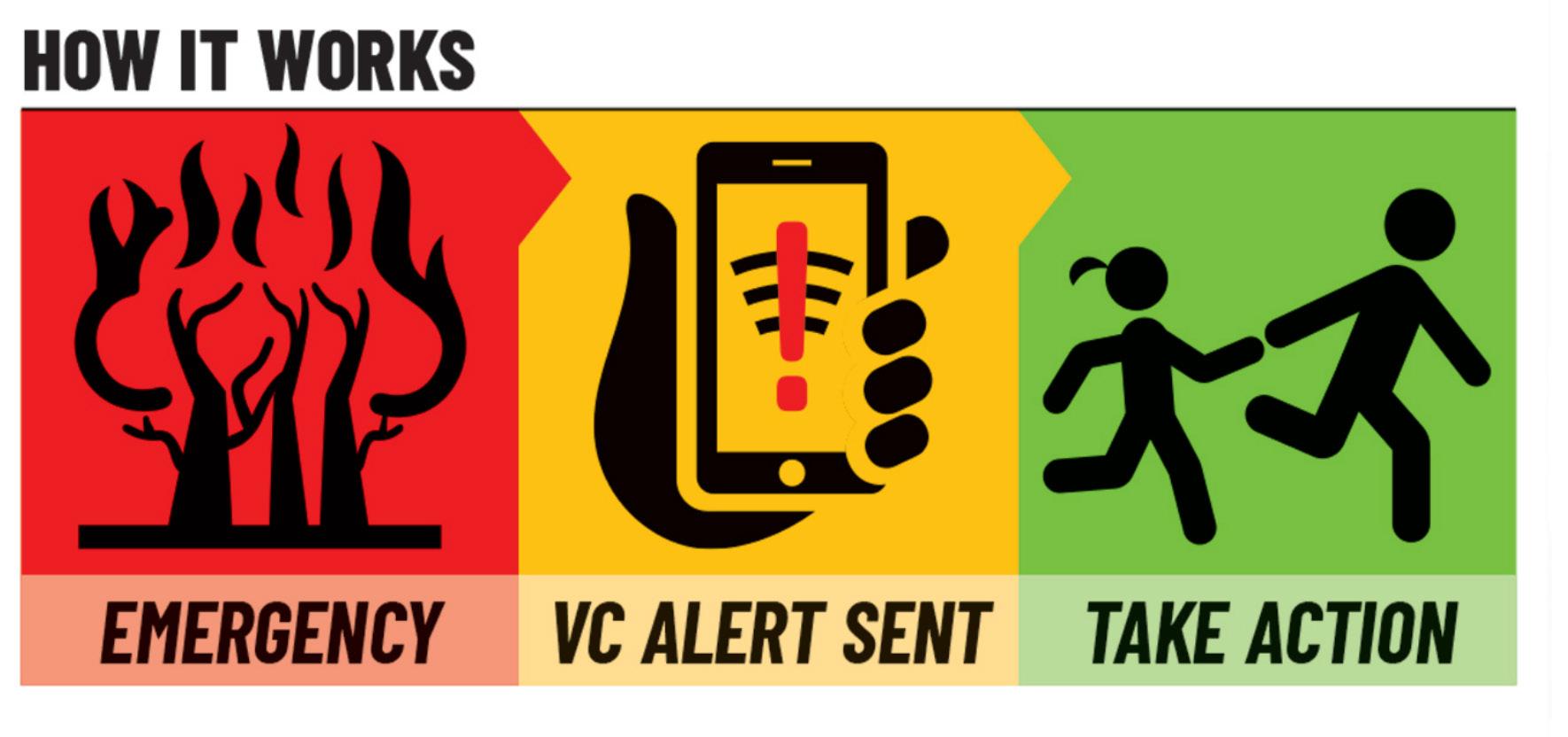
In the event of an emergency or threat to personal safety, it is important to stay connected with up-to-the-minute information from local emergency services.
To receive alerts by phone, text, email, fax, TTY/TDD device, or numeric page for your home, work or loved one’s location, register by one of the methods below:
Three ways to register with VC Alert: Internet: www.vcalert.org Email: vc.alert@ventura.org Phone: 805-648-9283
Here is a list of ways to help make sure you’re ready and connected during a fire-related emergency. Electricity may be out for extended periods of time. Consider how you’ll stay connected by keeping devices charged and by staying in touch with loved ones and those in your neighborhood who will need help.
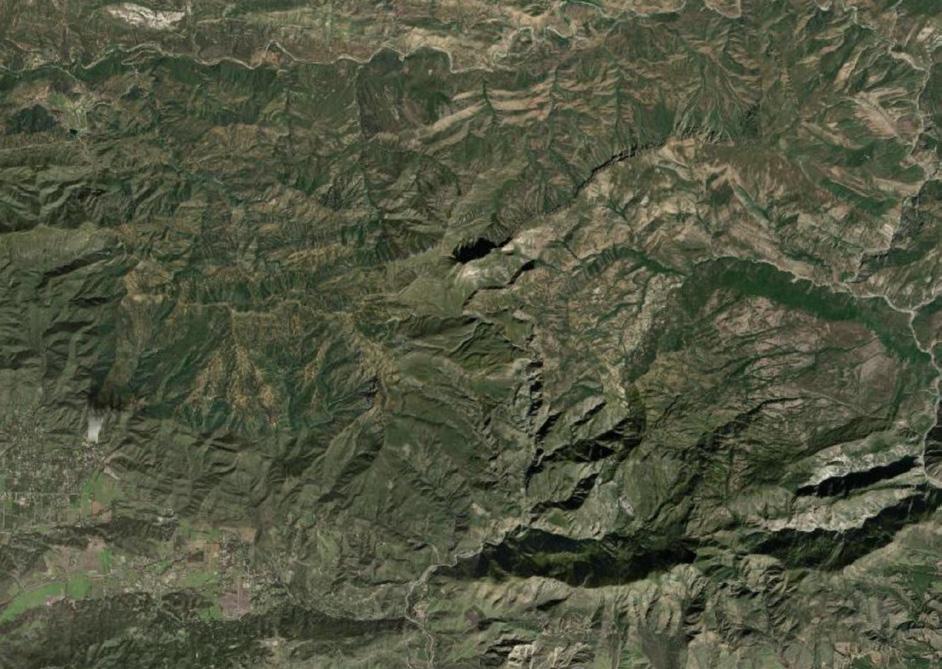
STAY INFORMED: What is your best source for local up-to-date information?
• vcemergency.com, website operated by the Ventura County Office of Emergency Services
• AM Radio 1610 (city of Ojai station)
• City of Ojai website: ojai.ca.gov will post alerts on its homepage
• City of Ojai TV: Spectrum Cable Channel 10
• Portable e-message trailers: City and county may place at key traffic sites
• MyOjai mobile app (make sure to enable alerts). Download from GooglePlay or the App Store
• City of Ojai social media:
• Twitter.com/cityofojai | Facebook.com/cityofOjai
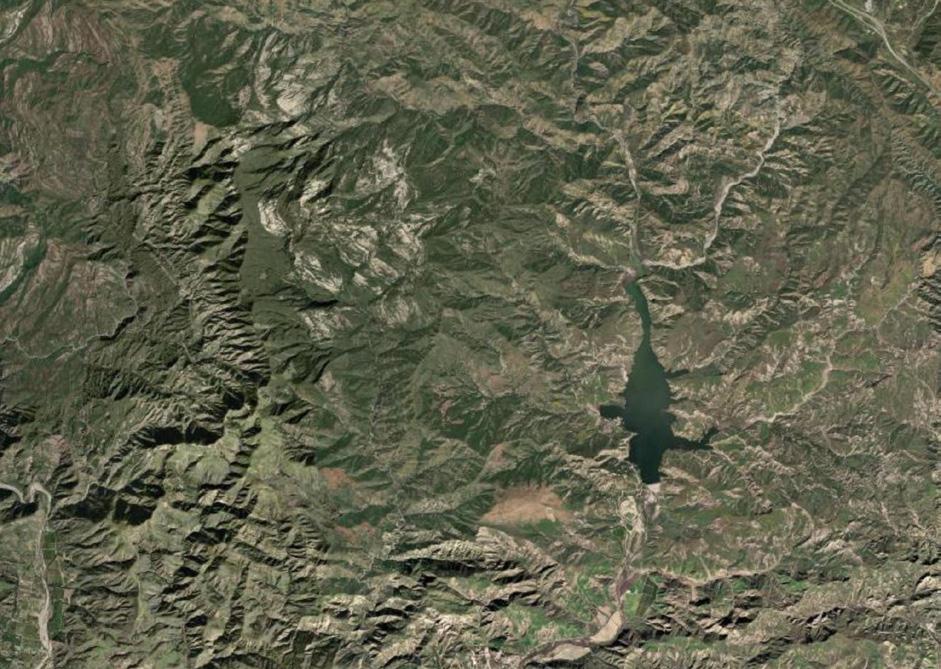

3. Develop an action plan.
4. Report investment and vegetation removed.
5. Host an annual outreach event.
communities in neighboring Ventura
After an overflow of people attended a Feb. 5 Firewise meeting organized by and Debbie Becker at Rancho Matilija a month after the January Mountain Fire, community members

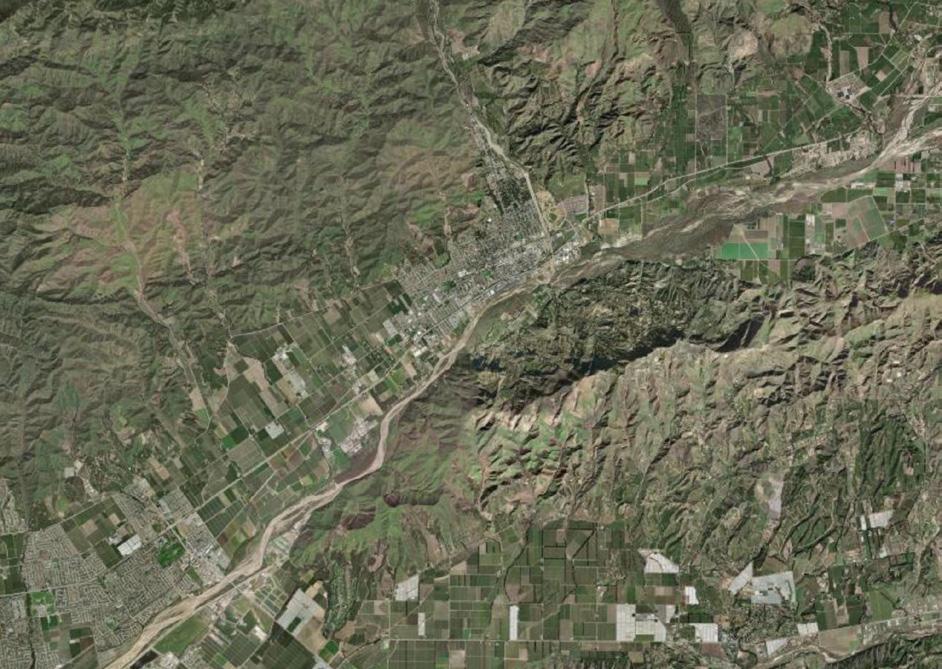
vegetation around their homes, inves tigating ember-protection screens and
• Nextdoor.com: City and public may send neighborhood-specific updates. Sign up at Nextdoor.com
• Local media news: Your local reporters will be covering emergencies. Subscribe and sign up for news alerts, newsletters and load apps to be ready to receive current information. Follow social media pages:
Ojai Valley News — ojaivalleynews.com, Facebook, X, Instagram
Ventura County Sun — venturacountysun.com, Facebook, X, Instagram
• WatchDuty App: Download the free Watch Duty app at watchduty.org This app for smart phones tracks fire information from agencies on the ground.
Start your communication-ready checklist:
Equipment and supplies:
Keep phones and laptops charged
Battery pack charger / solar charger

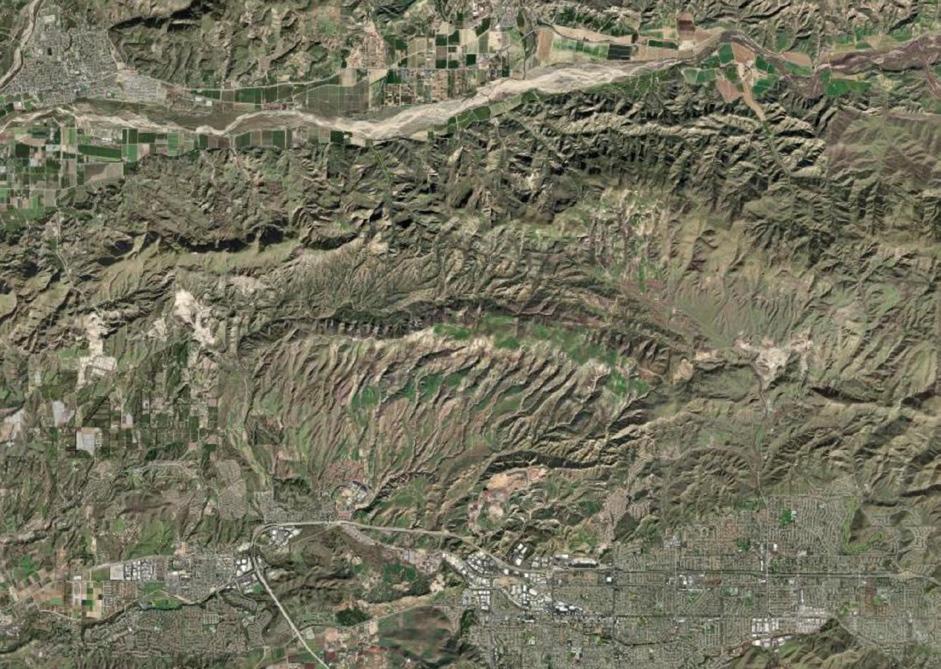
Keep at least half a tank of gas in vehicles and keep electric vehicles charged. Know several locations of nearby EV chargers in case the power is out.
Community connections:
Know your neighbors: Will they need help? Will you need their help? Have a neighborhood phone tree. Meet with your neighbors.

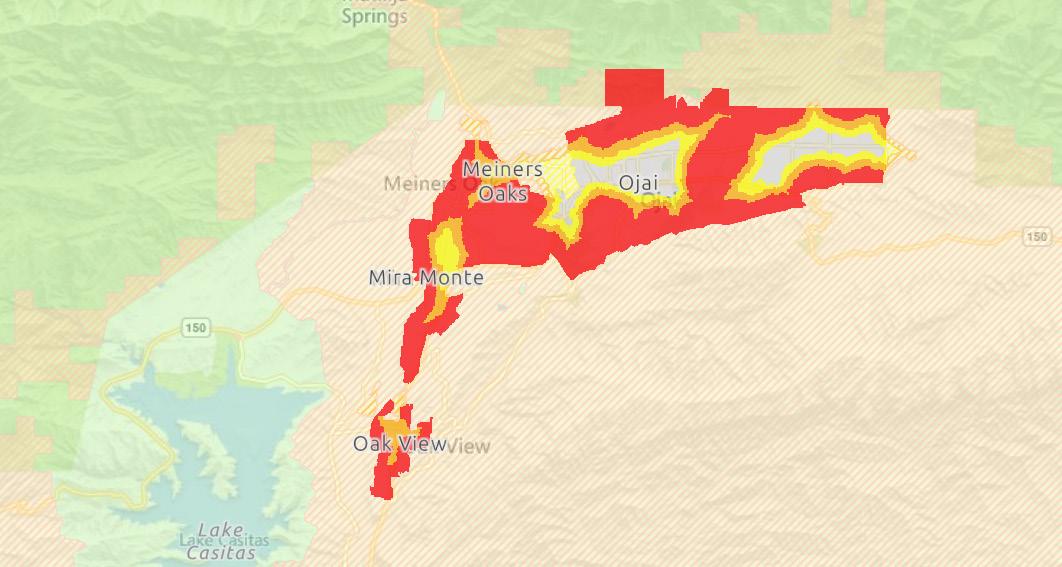
Solid-red areas show Very High Fire Hazard Severity Zones in Local Responsibility Areas. Ventura County Fire Department is locally responsible for enforcing fire-mitigation requirements in these areas.
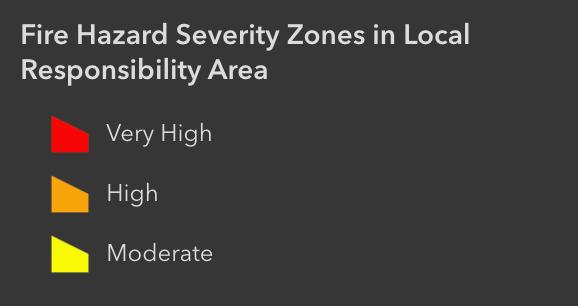
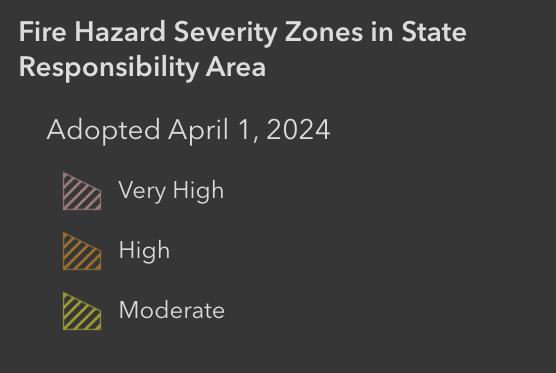
Cal Fire has created an interactive online map so residents and businesses can locate their properties to determine whether they are in a Fire Hazard Severity area, and if so, what rating their property has: moderate (yellow), high (orange) or very high (red).
There will be fire-mitigation requirements coming into effect in 2026, including Zone 0, that will apply, based on the rating and based on whether the property is in a Local Responsibility Zone or a State Responsibility Zone.
The interactive map allows users to go right to their addresses.
The solid color areas of yellow, orange and red are Local Responsibility Areas. The areas with stripped coloring are State Responsibility Areas.
Interactive Fire Hazard Severity Maps are online at: tinyurl.com/yc65kxh6
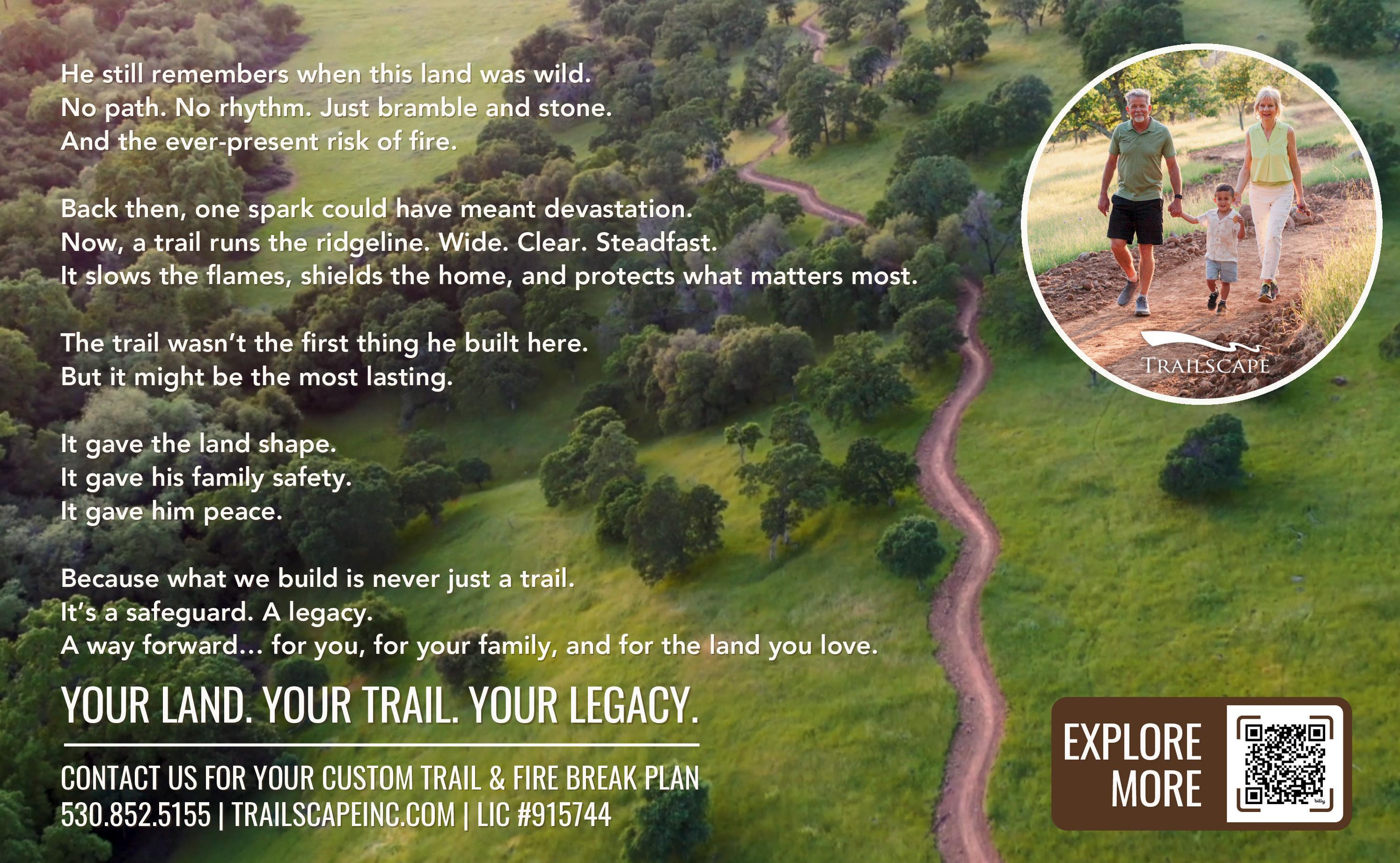
Kimberly Rivers kimberly@ojaivalleynews.com
Cutting off the pathways or “wicks” a fire can take to get to your house is key to saving it from catching fire. Like a wick on a candle, a fire will travel along fuel pathways. Wind and air currents, paired with the hills and valleys and other variances in topography, affect fire movement.
Drying vegetation from continuing changes to climate and hotter and dryer winds have led to a change in fire behavior. Fires are casting embers far in front of the fire line, putting communities at risk in a new way.
“Embers are the leading cause of structure ignition,” said Steve Hawks, senior director of wildfire, Insurance Institute for Business & Home Safety. “Embers cast fire within the community. At the same time, fire is burning the edge of the community.” This means the structures on the edges of the community are exposed to “extreme flames, radiant heat and embers.”
Because of this ember exposure under those extreme conditions, a fire “can quickly outpace the ability of local fire-suppression resources to keep up with defending structures and protecting lives.”
This means spot fires break out away
from where crews are actively fighting fires and make fire-hardening of structures and fire-fuel removal important factors in whether a structure remains or is destroyed.
Firefighters will move quickly through a community, tearing down rain gutters with burning debris to help prevent roof ignition. They will knock down a burning wood fence before the fire reaches the house.
By preparing a home in advance, homeowners can pre-emptively assist firefighters, allowing more resources for where they are truly needed.
All stakeholders agree that there is very little a homeowner can do about topography or wind. But managing vegetation around the home can be key to the structure not burning down.
Officials are still working out details related to clearing vegetation and other combustible materials in the area up against structures.
Some stakeholders are advocating for including the beneficial effects of native plants that may have beneficial effects as “ember screens” in some cases.
• Will a barrier of properly hydrated native plants act to catch embers or divert


radiant heat?
• Will a hot fire strip all plants of moisture causing those plants to become wicks for fire?
•Will a hillside of irrigated native plants catch flying embers to protect a home at the top of a slope?
These are some of the questions still on the table. However, one thing is agreed upon — home-hardening is key to a structure surviving a massive fire event, and some form of a Zone 0 approach is expected to take effect for many home and business owners starting in January 2026.
“There are many homes across California that are basically in a moat of combustible material. … There’s not one single solution that solves this problem,” said Yana Valachovic, a scientist with the University of California, Agriculture and Natural Resources Fire Network, speaking at the Sept. 17 Zone 0 Town Hall in Newbury Park.
She explained that efforts to mitigate fire risk focus on the three ways to cut off fire pathways, or “breaking the wick” to homes. Through defensible space farther from the home, planning to address ember casts, and tactics to mitigate radiant heat, a structure can be hardened to prevent ignition.
Zone 0 is being designed to address all three:
• defensible space
• preventing ignition from embers
• blocking or not creating radiant heat.
The rules will require the first 5 feet around a residence or building be free of combustible material in a statewide effort to harden homes against the threat of fire.
“Once you break the wick, you can slow down that process of runaway combustion of that radiant heat set of issues,” said Valachovic.
After destructive fires in 2017 and 2018, including the Thomas Fire, the California Legislature passed Assembly Bill 3074 in 2020. That legislation directed the California Board of Forestry and Fire Protection to create a third zone of defensible space. Previously, homeowners had to clear brush within 100 feet of their homes, and do additional clearance within 30 feet.
In the wake of the destructive fires in Palisades, Altadena and Eaton in January, Gov. Gavin Newsom issued an executive order that the Board and the State Fire Marshal complete the rulemaking Assembly Bill 3074 requires by the end of 2025.
As part of the Zone 0 rulemaking, a public process is required and is currently underway with a Dec. 31 deadline set by Newsom.
Based on the legislation, Zone 0 will require the removal of combustible materials from that 5-foot zone around the residence.

Materials considered combustible under Zone 0 include: wood mulch, furniture, synthetic turf, and vegetation.
Status
It is not yet required and the details of the requirements are being finalized. Public input is still being received.
Once rules are final and adopted, Zone 0 will apply immediately within all State Responsibility Areas. These are areas where the state has primary responsibility for firefighting.
Zone 0 will also apply to Very High Fire Hazard Severity Zones within Local Responsibility Areas, where local firefighting agencies have primary responsibility. Those agencies are also the enforcement agencies for Zone 0.
Existing homes and business property owners will have three years to clear the vegetation and other combustible materials from 5 feet immediately around the main structure, or the property line, whichever is closer.
This three-year phase-in is designed to give families and businesses the time to plan, budget, and implement the changes.
Once the new rules are final, beginning in 2026, all new construction in the State Responsibility Areas (SRAs) must comply
with Zone 0. SRAs are those areas where the state has the primary responsibility of fighting fires.
According to Jay Lopez, who serves on the California Board of Forestry and Fire Protection, state law requires “insurance companies to provide discounts for the work that” homeowners “do on your defensible space.” This includes Zone 0 and other home-hardening. Lopez was speaking at the Sept. 17 Zone 0 Town Hall meeting in Newbury Park.
While the details are not yet finalized, Zone 0 will generally require the removal of flammable items such as woody vegetation, firewood, wood products, or petroleum-based products located around the edges of buildings, attached decks or stairs. For example, synthetic lawns burn and should not be next to a structure. The regulations will likely address combustibles such as wood-based mulch, woody plants, dry grass, synthetic lawns, stored lumber, storage sheds, wooden gates attached to the structure, small trees, and other landscape materials within the first 5 feet of the structure and any attached decks.
Inspectors are encouraged to primarily educate, only using enforcement as needed. For example, movable items such as garbage and recycling receptacles, vehicles, doghouses, HVAC
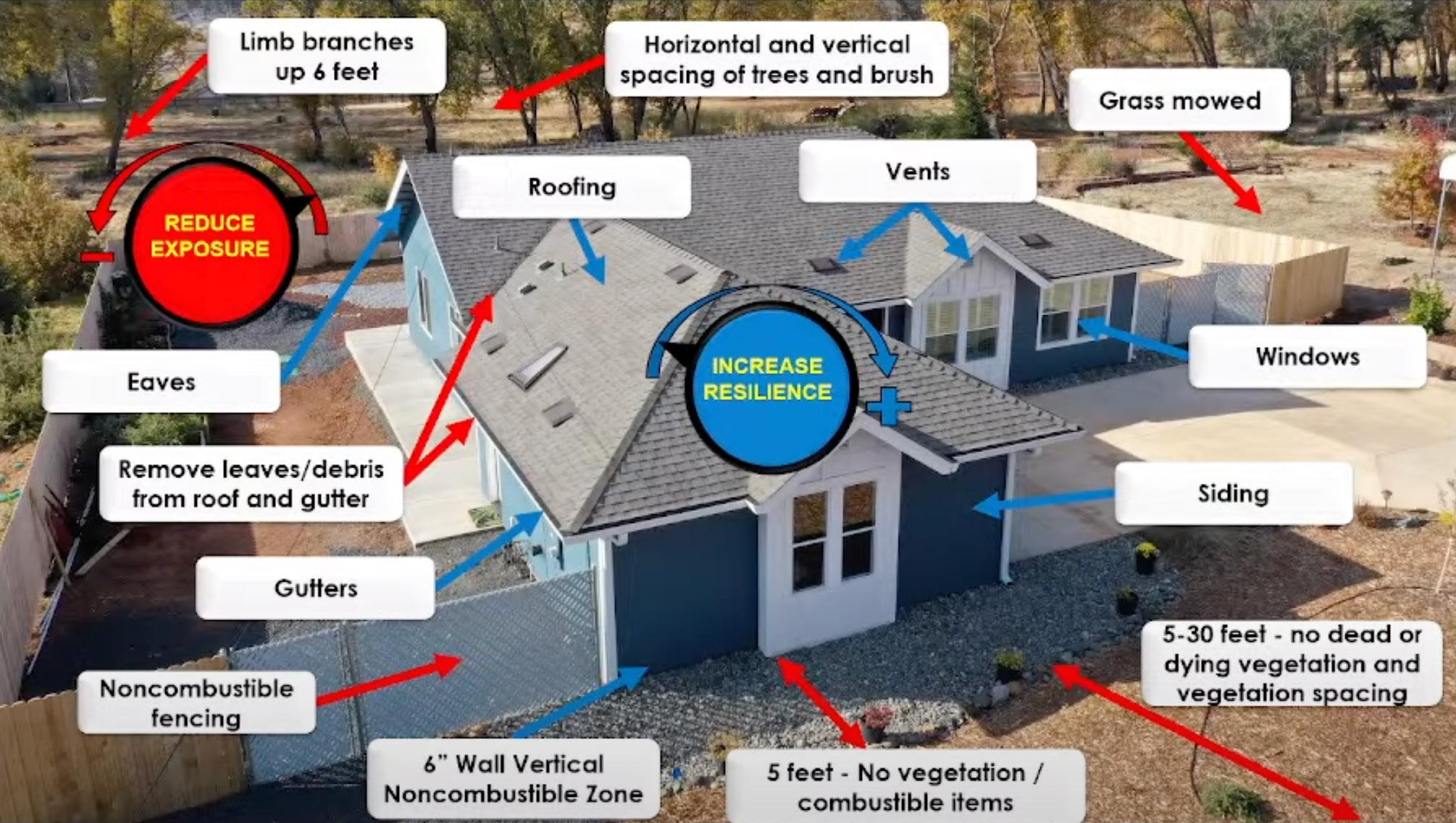
and heat pumps, BBQs, and built-in outdoor kitchens may be approached with inspectors offering guidance around their maintenance and the best practice of moving these items upon evacuation.
Trees that are protected by local ordinances, such as oak trees, are exempted from Zone 0 rules. Also, nonprotected species that stand alone, without overlapping other tree branches, will be allowed to remain.
Lopez said that “specimen trees,” or single trees that are established near homes within the Zone 0 boundary, will get a special “dispensation” and do not
have to be removed.
Valachovic said the Board of Forestry “is not targeting trees” with the Zone 0 rules. However, if the trees “drop debris” that may be burning on the home, or nearby, that creates “a surface fire issue. … Maintenance is what this is really all about,” said Valachovic.
The rules will require maintenance to remove all dead or dying branches. Pruning of low branches will be required to 5 feet from the roof or walls, and 10 feet from chimneys.
More information on the Zone 0 rulemaking process is online at tinyurl.com/pxua3tsx.
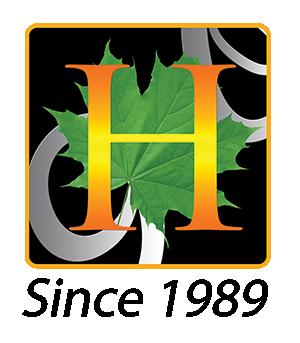

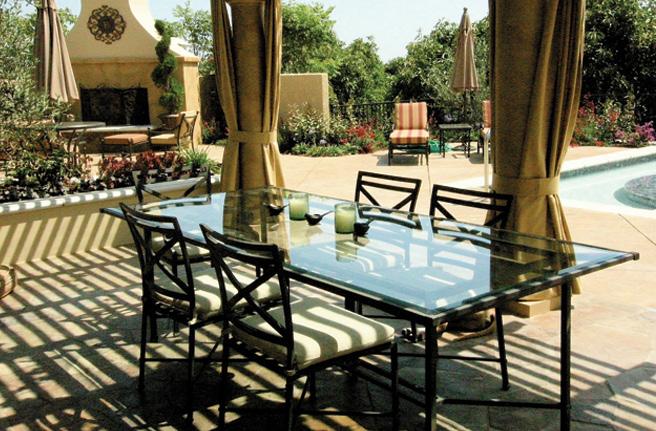





We all hear about ways to protect one’s home and property from fire, aka home-hardening. What that actually entails is spelled out by the Ventura County Fire Department in its “Wildfire Property Assessment” brochure, online at: tinyurl.com/4t95r2b6
Here is what it says:
Home and building loss during wildfires occurs from one or more of the three basic wildfire exposures: 1) Embers, 2) Radiant heat, and 3) Direct flame contact.
Burning embers can travel up to a mile from the fire front and cause the majority of wildfire home ignition.
Fire season length can vary. Maintenance of your home and property should be year-round. Start with your home and then work your way outward through the defensible space zone.
Many older homes were built before increased building standards in hazardous fire areas were adopted. “Home-hardening” refers to making improvements and upgrades to the most current building standards for fire areas. While some items are expensive to retrofit, there are items
that can be done very simply: Roofs and gutters
Roofs, even cement and mission style, require maintenance. Roofs settle over a period of time as the lumber dries out. This can cause small gaps to form in the tile spacing and trap debris that can ignite under the tiles. Asphalt shingles can curl or be displaced.
• Inspect your roof to eliminate any areas that can trap debris.
• Block any spaces between roof decking and covering to prevent ember intrusion.
• Clean valleys and gutters regularly.
• Remove all tree branches or vegetation within 3 feet to the side, above, and below the roof or any eave projection from the exterior wall of the structure.
• Consider replacing a nonrated roof with a Class A-rated noncombustible roof.
Walls, siding and trim boards
• Inspect for worn, cracked and peeling paint.
• Eliminate exposed wood.
• Replace cracked or damaged boards.
• Check for excessive spacing in joints between boards and at junctions to walls and roofs. Caulk gaps as necessary.
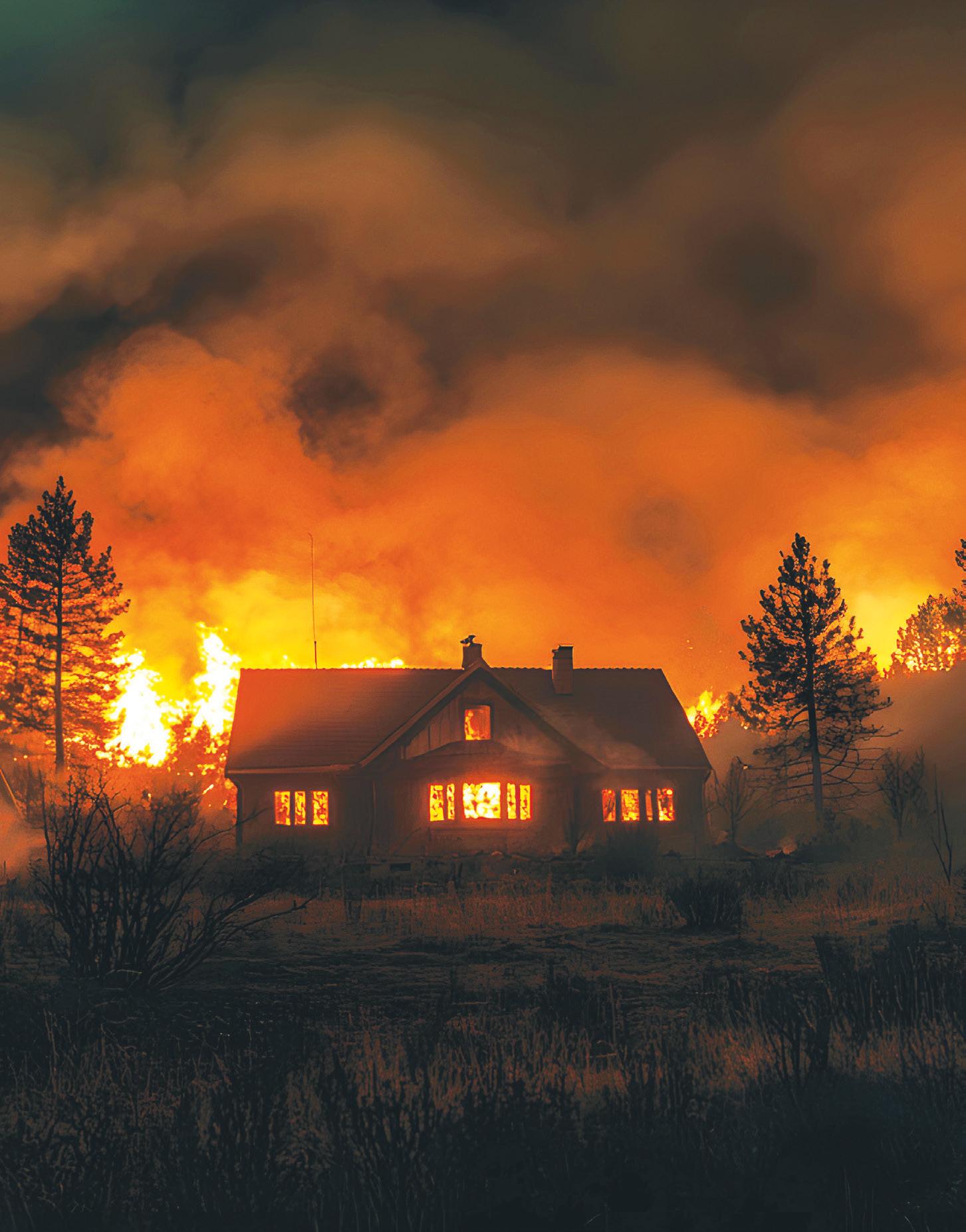
• Wood and vinyl siding exposed to excessive radiant heat from a fire can ignite. Consider replacing wood or vinyl siding with a noncombustible siding.
• Provide a minimum 6-inch noncombustible wall covering at base of any wall where it meets the ground.
Vents and eaves
• Regularly inspect vent openings for damage.
• Replace with 1/16-inch to 1/8-inch mesh. Do not use fiberglass or plastic.
• Replace vents located at eaves and cornices with approved baffle-style vents to block embers.
• “Box in” exposed wood underneath eaves using stucco.
Windows and door openings
• Consider replacing windows with multi-pane tempered glass. Steel frames are preferred.
• Install and maintain weather stripping around and under any doors, including the garage door.
Chimney
• Cover your chimney and stovepipe outlets with a nonflammable screen.
• Use metal-screen material with openings no smaller than 3/8-inch and no larger than 1/2-inch to prevent embers from escaping and igniting a fire.
Patio covers
• Use heavy timber or ignition-resistant materials. Contact your Building Department for specific requirements.
• Do not attach plastic and fabric sunscreens to the home. Keep them 5 feet away.
Decks
• Decks within 10 feet of a building should be built with ignition-resistant, noncombustible, or other approved materials.
• Replace decks not built to current building codes.
• Create an ember-resistant zone around and under all decks and make sure that all combustible items are removed from underneath your deck.
• If a deck overhangs a slope, create and maintain increased defensible space downslope from the deck to reduce the chances of flames reaching the underside of the deck.
Belongings and other combustibles
Look for combustible materials within the yard. Remove or relocate them away from the home.

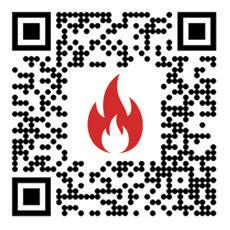
Store them inside when not in use or cover them with a fire-resistant cover. This includes yard furniture, trash cans, woodpiles, etc. Remove items next to structures that can trap flammable leaves and debris.
Landscaping and defensible space
Remember, fire-resistant does not mean fireproof! Even fire-resistant plants will burn if not well-maintained. Keep all of your plants healthy with appropriate water, proper pruning and removal of
dead material.
• Combustible mulch and wood chips are prohibited within 5 feet of a building (Ventura County Fire Code).
• Remove plants underneath windows.
• Provide a minimum 5- to 6-foot clearance from roof overhangs above any plants.
• Remove vines and other plants growing on buildings.
• Consider removing any plants and trees that are identified as hazardous or prohibited by Ventura County Fire Department. See our website for more information regarding defensible space, plants, trees and spacing requirements.
Trees
• Provide a minimum 10-foot space between the tree and home.
• Remove any dead branches and areas that can cause dried leaves to accumulate within the tree. This includes removing dried palm fronds.
• Limb trees up from the ground a minimum of 6 feet and provide additional space above plants located underneath trees.
Use noncombustible fencing. Remove and space vegetation away from combustible fencing. Watch wood fencing burn to homes at youtu.be/PoPiC3Ugk94 Access roads and driveways
• Trim trees and landscaping overhanging the road or driveway.
• Maintain a minimum 13-foot-by-6 inch vertical clearance and up to a 10foot horizontal clearance along roads and driveways.
• Provide a Fire Department-approved Knox key device for locked gates.
Address
Make sure your address is clearly visible from the street. Use minimum 4-inchhigh numbers contrasting with the background. Mount on noncombustible surface or post.
Water supply and fire hydrants
• Maintain a minimum 3-foot clearance around all fire hydrants. Make sure the fire hydrant is visible and there is direct access to it. This includes Fire Department outlets on private water-supply tanks.
• If your property is on private water or well water, consider backup power supply for the water-pump system.
• Cal Fire home hardening and low-cost retrofit list: tinyurl.com/47xa8fer
Wildfire Home Hardening, located in Ojai (see ad at left): wildfireHardeningCA.com, 805-246-7372.
Ventura County Fire Department: vcfd.org
Kimberly Rivers kimberly@ojaivalleynews.com
According to Patrick Maynard, director of Ventura County Office of Emergency Services, a division of the Ventura County Sheriff’s Office (OES), evacuating early can help prevent a “shelter-inplace” situation where residents can be trapped.
Shelter in place "is an option of last resort, and it means you failed to evacuate early,” said Maynard.
Shelter in place, in a person’s home, is mostly used now during hazardousmaterial events, or law-enforcement events.
In the event of a fire, or other larger-scale event, Maynard said, centralized “designated locations, called Temporary Refuge Areas,” are for residents to shelter in place in a central location in their area. Maynard said Camp Chaffee near Foster Park is one example.
Currently, that is an “absolute last resort,” and when it becomes necessary, it “means something has gone incredibly wrong,” which means the resident “failed to evacuate early,” said Maynard. He said that evacuees in Temporary Refuge Areas can become “isolated from the rest of society and will have to hunker down, and the area may be unsafe to access” for first responders. “What will they do for restrooms, food and water?” Maynard asked.
Also, in the event of fires, the area can be unhealthy to remain in due to smoke and ash.
When disaster strikes
In the event of a disaster, OES activates the county’s Emergency Operations Center (EOC), which is a centralized location for coordinating countywide emergency response activities, supporting field operations and coordinating damage assessments and cost recovery from state and federal governments.
Ventura County utilizes the National Incident Management System and Standard Emergency Management System to establish common operating procedures and to ensure an effective organizational structure for a unified disaster response.
OES regularly provides training on these incident management systems to local public safety personnel.
OES, in partnership with the Ventura County Human Services Agency, is responsible for the preparation, planning and deployment of the Mass Care and Shelter system.
The county’s comprehensive evacuation and shelter plan is supported by a large-scale supply of inventory and equipment specifically designed to meet the needs of displaced Ventura County residents during a disaster.
The terms “voluntary” and “mandatory” are often incorrectly used to describe evacuations. According to the Ojai Valley Fire Safe Council, law enforcement will use the terms “Evacuation Order,” “Evacuation Warning,” and “Shelter-In-Place” to alert you to the significance of the danger and provide basic instructions. It is important that all residents understand the difference between each of the evacuation instructions.
Evacuation Order
This means leave now. Follow your evacuation plan and evacuate immediately. Do not delay gathering your belongings or preparing your home. Pay attention to specific instructions that will be contained in the evacuation order.
Evacuate as soon as possible. A short delay to gather valuables and prepare your home may be OK. Leave if you feel unsafe. “Evacuation Warnings” may become “Evacuation Orders” if conditions change.
Stay in your current location or the safest nearby building or unburnable area. This type of direction may be required when evacuation is not necessary or is too dangerous. All evacuation instructions provided by officials should be followed immediately for your safety.
A Temporary Evacuation Point (TEP) is a centralized location used as a gathering point for individuals required to leave their residence during a disaster. In many cases, temporary evacuation points may also have emergency congregate shelters established at the same location.
In the Ojai Valley, Nordhoff Junior and Senior High is identified as a TEP on the vcemergency.com map.
A Temporary Fire Refuge Area (TFRA) is a pre-identified open space intended to offer reduced exposure to flames and heat when evacuation is no longer possible. Unlike safety zones or formal shelters, TFRAs are not guaranteed safe zones; they are intended only as a last resort.
The following information is in the Ojai Community Disaster Guide, which can be viewed with the QR code and online at tinyurl.com/ycza34ca
County-operated Ojai Valley Temporary Evacuation Point:
The county Office of Emergency Services identifies Nordhoff Junior High and High School at 1401 Maricopa Highway as a Temporary Evacuation Point in the Ojai Valley. Depending on circumstances, other shelter sites could open in the Ojai Valley.
Because Ojai has limited ingress and egress and many owners of large animals with horse trailers, the city of Ojai has designated Soule Park Golf Course parking lot at 1033 E. Ojai Ave. as a Temporary Refuge Area during major emergencies.
Evacuation routes:
There are four main evacuation routes of the city of Ojai:
1. Southbound Hwy. 33 toward Ventura
2. Northbound Hwy. 33 toward Los Padres National Forest
3. Eastbound Hwy. 150 toward Santa Paula
4. Westbound Hwy. 150 toward Santa Barbara

Upon official notice of an evacuation, Ventura County Sheriff or Fire Department may request road closures into the city of Ojai to reduce traffic congestion and allow more traffic to leave the area. The Ventura County government, Sheriff's Office and city officials will provide information on where to go in an evacuation, based on incident locations, weather and road conditions. This information will be broadcast through the public-safety notification system and government online sites, including at vcmeregency.com and ojai.ca.gov


Kimberly Rivers kimberly@ojaivalleynews.com
Smoke is clouding the air from a nearby fire. If you can see the smoke or smell the smoke, that means smoke is in the air. Whether you’re hurrying to evacuate, or returning to your home and there is still smoke, it is important to think about protecting your lungs from the harmful effects of smoke.
The Centers for Disease Control recommends staying indoors, and out of the smoke. But if (and when) you must go outside when smoke is in the air, the CDC recommends wearing a specific type of protective mask, called a respirator. Which type of respirator should you wear?
The short answer is: It depends. Respirators are rated based on what they keep in or keep out of the air being inhaled or exhaled.
Smoke from forest fires
When a fire is burning mostly in the forest, or other open space, most of what is burning will be organic matter. That requires one type of respirator: N95. The 95 in the rating means that 95% of particulate matter will be blocked, down to small particles with a diameter of 2.5 micrometers or less. These tiny particles can get deep into the lungs and cause
Dear Neighbor,
health problems.
Most N95 masks are designed to be single use, and must fit properly to be fully effective. Read packaging for instructions. Smoke from burning houses
If the smoke is from burning houses, structures, oil fields or seeps, fertilizer, pesticides, industrial areas, or any other materials and compounds, the smoke will hold vapors and chemicals that require additional protection.
Think about all the plastics, treated lumber, cleaning products, stored chemicals, appliances and vehicles that can burn during a fire. All of those go up in smoke.
According to information from Harvard University: “Wildfires (especially those involving structures or diverse materials, like urban wildfires) can release volatile organic compounds (VOCs) and some inorganic gases. Notably, smoke may contain organic vapors from burning wood, vegetation, plastics, foam, fabrics (e.g., benzene, formaldehyde) as well as potential acid gases or other irritants.” (1)
During the Thomas Fire in 2017, fields with oil seeps were burning. And in the Upper Ojai Valley, many oil seeps were smoldering for months, releasing smoke and vapor that collected in the valley, affecting air quality.
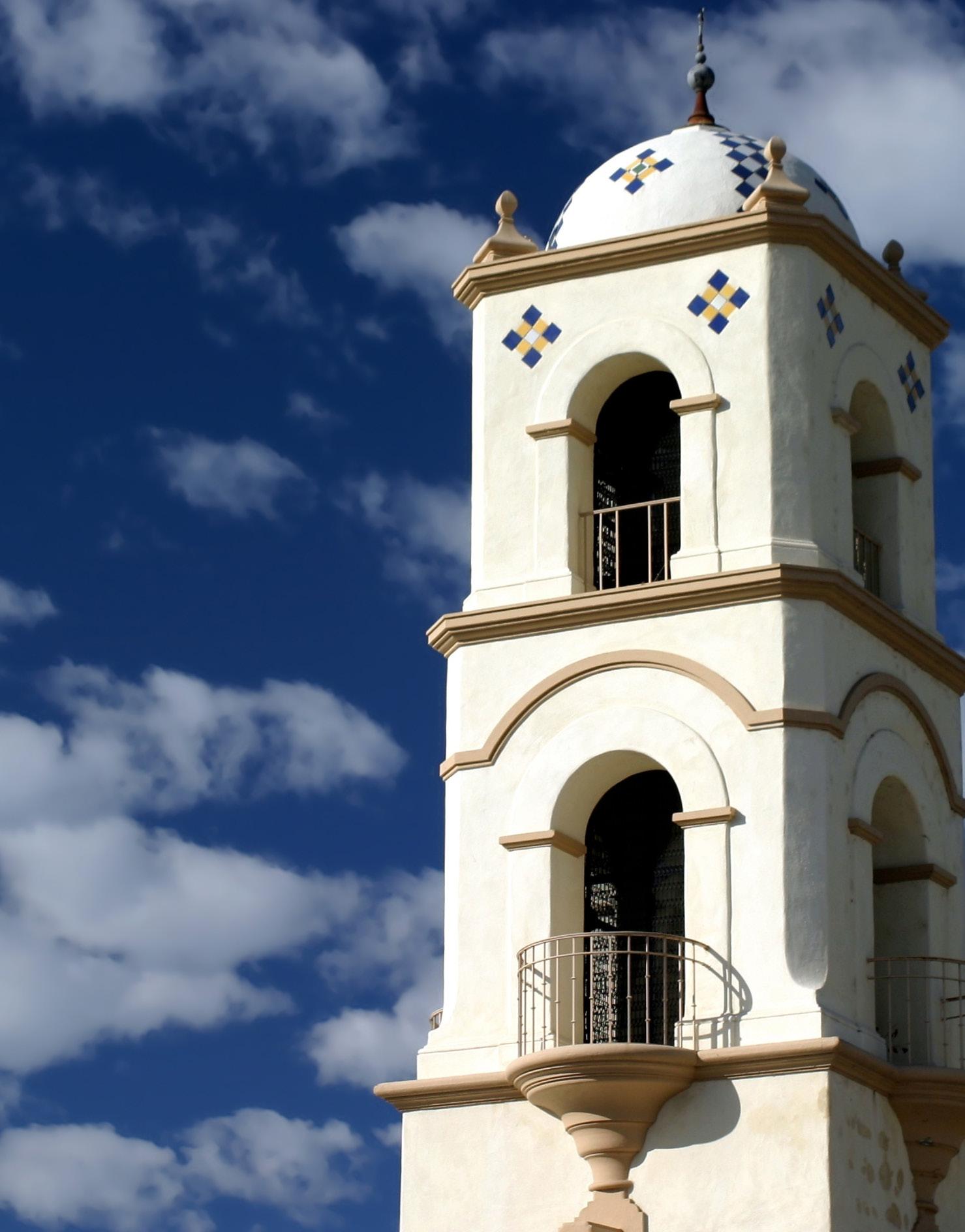
The N on the N95 masks means that the mask is not resistant to oil. P in the P100 masks means that the mask is “oilproof.” A P100 respirator filters out at least 99.97% (close to 100%) of particles, down to 2.5 micrometers, and blocks out vapors that contain oils and other compounds.
P100 respirators have pink (called magenta by some manufacturers) cartridge filters. These are sometimes hard plastic, or round fabric. They attach onto a mask that has straps that go around the entire head.
These cartridge filters also have different colors to indicate they provide different levels of protection. Olive green is the most protective against several types of vapors and compounds; yellow is protective against organic vapors and acid gas; and a black cartridge protects against organic vapors.
A pink cartridge filter with olive-green bands around the base of the filter will provide the most protection against smoke and ash from fires that are burning homes, structures and other built and industrial areas.
The gray P100 harness will cost around $25. A pink/olive cartridge filter will cost around $45-$50 for a pair, for a total cost of about $75 per person for full protection.
• Don’t forget to change air filters in vehicles during and after a fire. Remember the cabin filter for indoor air in your vehicle!
• Has your place of work changed the air filters on the building HVAC system?
1. tinyurl.com/32tkk547
Our locally owned independent newspaper is a vital community resource providing emergency coverage free, empowering voters to make informed decisions, shining the light on local issues, agencies, and providing profiles and culture that become our community’s historical record. Your local news survives on subscriptions, local business advertising, and gifts. We need your support. Please help us continue to provide this public service and subscribe online and in print today.
Thank you for supporting local journalism,



Additional resource: LA Fire Health Study: lafirehealth.org/about/ Harvard Healthy Buildings A P100 respirator with the mostprotective filter.
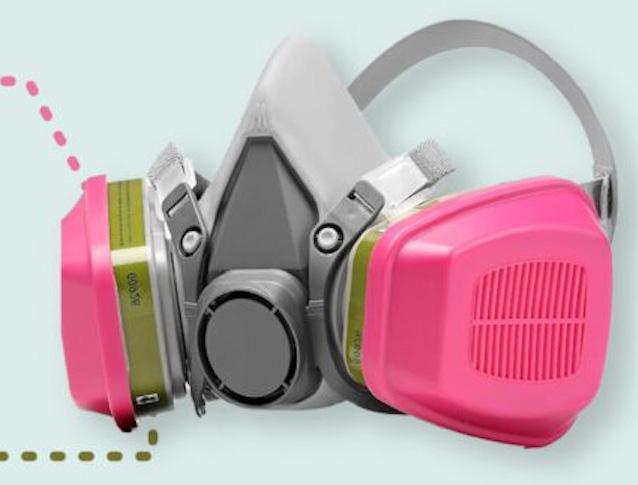
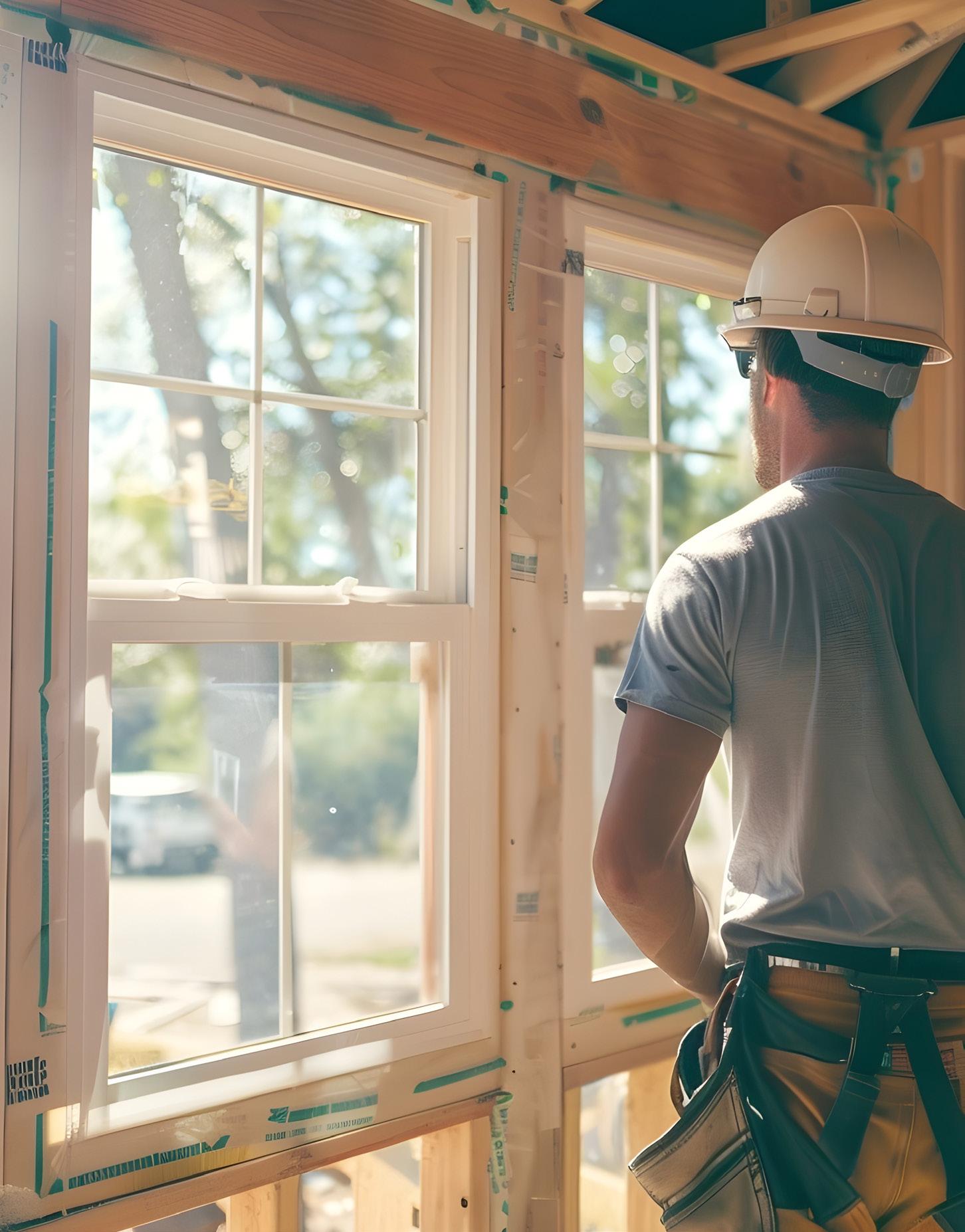


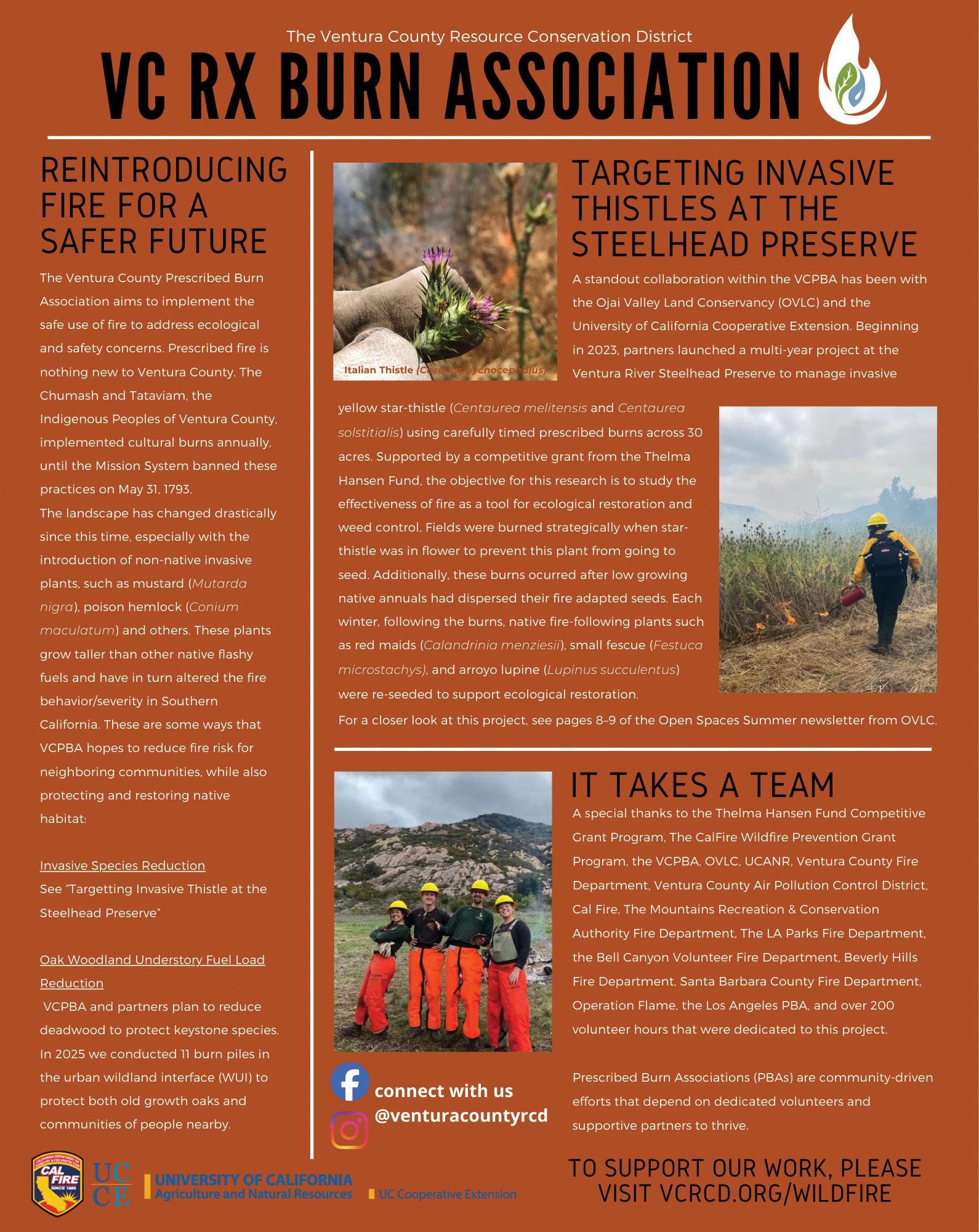

The first 5 feet around your home is critical for protecting it from wildfire. That space is “Zone Zero.”
The first 5 feet around your home is critical for protecting it from wildfire. That space is “Zone Zero.”
You want to keep it free of anything that can burn, including:
• Zero wood mulch.
• Zero firewood.
• Zero plastic garbage cans